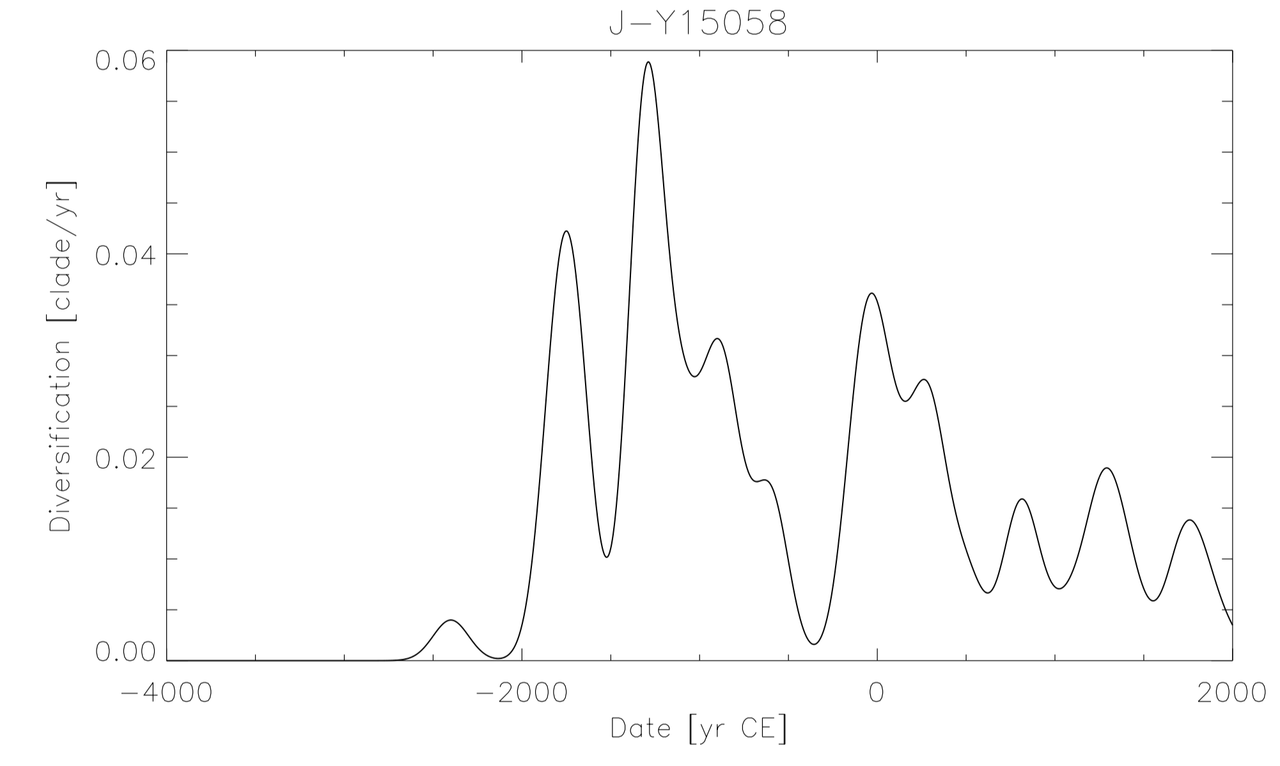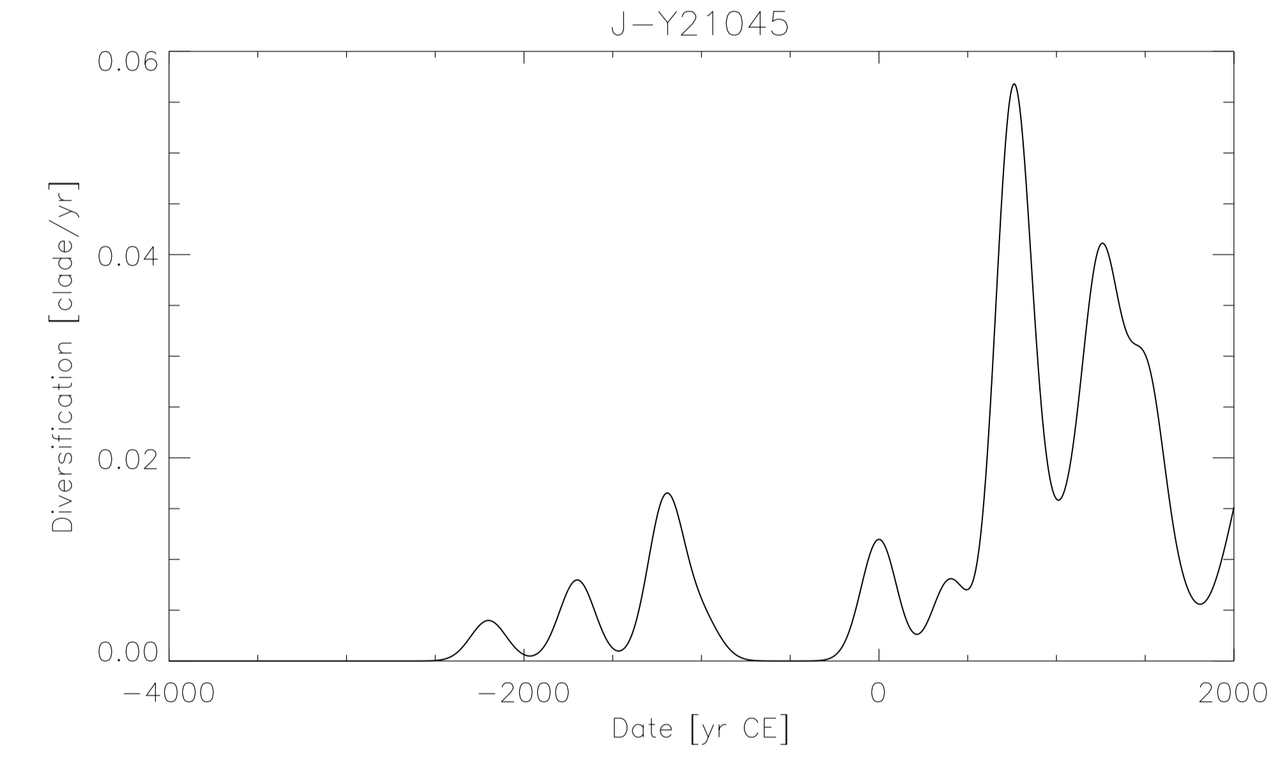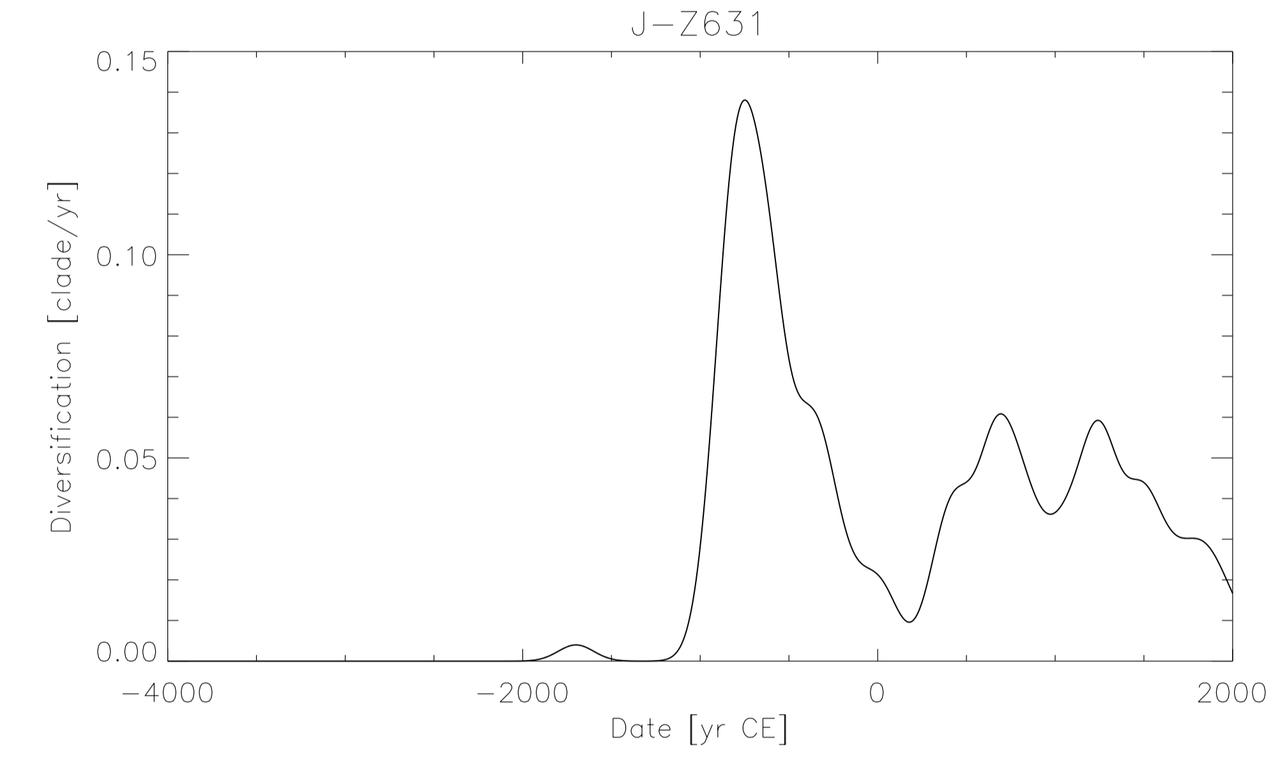Small update on diversification dynamics with YFULL v10.00
Main hypotheses:
-To diversify a population need to expand/migrate to some extend (if staying at the same location, competition between lineages avoids diversity to survive).
-An expanding population diversifies (not really an assumption ...)
-When in contact with a expanding population, a neighbor population also experience some level of diversification (not affecting all clades)
-Neighbors populations are involved in similar historical events and therefore have diversification histories that are correlating.
Feel free to discuss these assumtions if you disagree (but please, go beyond simple disagreement and provide some well documented exemples that you consider as counter exemples). That way, we should be able to discuss the methodology, its relevance, and we may avoid "ideologically"-tainted positions.
Let start with a clade on which I guess everybody agrees thanks to recent ancient DNA :
Keep in mind the 1800-1700 BCE diversification event.
Obvious Bronze-Age Collapse related stuff around 1300 BCE.
We have a little bit of signal around 900 BCE, we will discuss that later.
Some 600 BCE stuff also happening (concerns PH1602).
Obvious ~0 CE signal.
Beyond the effect around 0 CE likely linked with Romans, we could also note that Illyrian-clade identified during EIA in western Balkans (Patterson et al. 2021) didn't went through a large European dispersion but nearly got extinct (J-Y86930).
Then let tacle a clade showing an amazong history/diversification correaltion:
For people doubting of the relevance of this probe :
-Of course the 1700 BCE diversification for Y21045 is totally "unrelated" to the nearby Y15058 (just north of Y21045) diversification
-Of course the 1200 BCE diversification is "unrelated" to Bronze-Age Collase.
-Of course the 0 CE diversification is "unrelated" to Roman invasions (in this case likely recovery post-invasion)
-Of source the 700 CE diversification is "unrelated" with Slavic invasions.
What a big bunch of coincindences for this clade

.
Also note that Y21045, despite being significantly diverse by roman times, didn't exited at all Albania following Roman invasion.
Finally let enter the hard "topic", the terrible Z631 clade ...
Note the diffusion peaking around 750 BCE (mix of intense diffusions around 900, 800 and 600 BCE).
There is also a 400 BCE diffusion stage.
Roman times have nearly no signal (despite some level of interaction due to the well known roman Z631 sample in 100 CE).
Then, let compare with other clades :
-Y21045 : nothing around 900-400 BCE, should we believe that Z631 had a major expansion just next to Y21045 without Y21045 being affected ? What a challenge.
-Y15058 : there is some level of match around 900 BCE, the Y15058-subclades involved are BY162321 and CTS6190, respectively attested with ancient DNA around Hungarian-Austrian border around 300 BCE and in Etruria around 650 BCE. Therefore the 900 BCE diversification appear to concern the northern edge of Y15058. Also the PH1602 diversification around 600 BCE in Balkans strickingly match with a known Z631 balkanic clade also carrying 600 BCE diversity.
Let summarize all we have :
--> Illyrian lineage below Z38240 (J-Y86930) seems to have been nearly exterminated (by romans ? or slavs ? some ~100-500 CE samples would allow to test that) and not really diffused by Romans through all Europe.
--> Illyrian lineage below Y21045 (significantly diverse) didn't exited Albania at all during roman times.
In such context, it is hard to explain how Romans would have selected Z631 dudes to disperse them and only them.
We have here a significant mismatch of outcome for the roman invasion with the roman dispersion theory.
Such mismatch could be "reduced" if Z631 diversification was post-roman ... but it is pre-roman, which nearly completely kills this "roman-diffusion" theory.
On top of that, we have small indications from diversification correlation that Z631 was likely near the northern clade of Y15058 (BY162321 & CTS6190).
Therefore, if I had to put a coin on Z631 location during EIA ... I would go for the northern area covered by Y15058 --> Slovenia/Austria.






